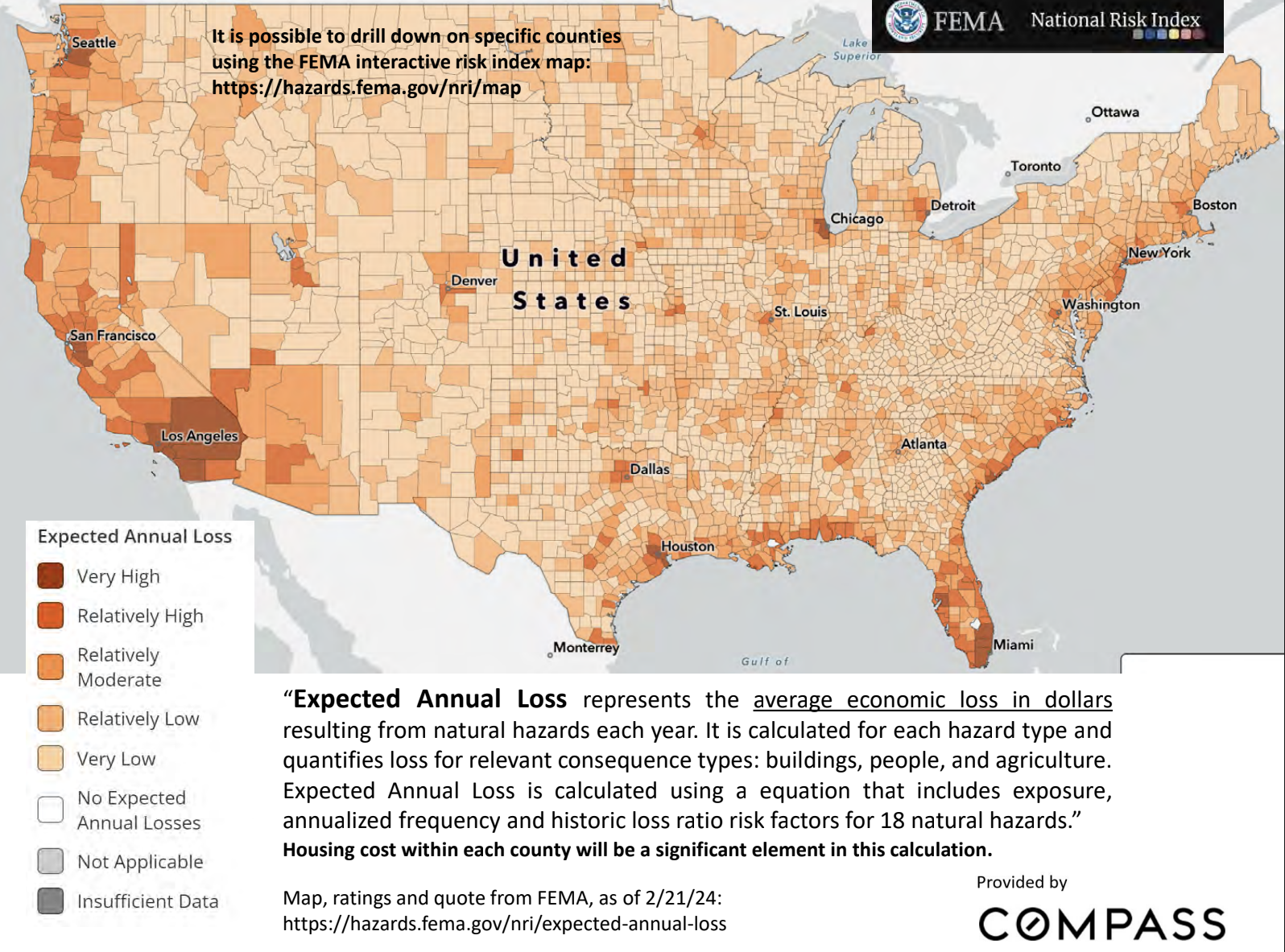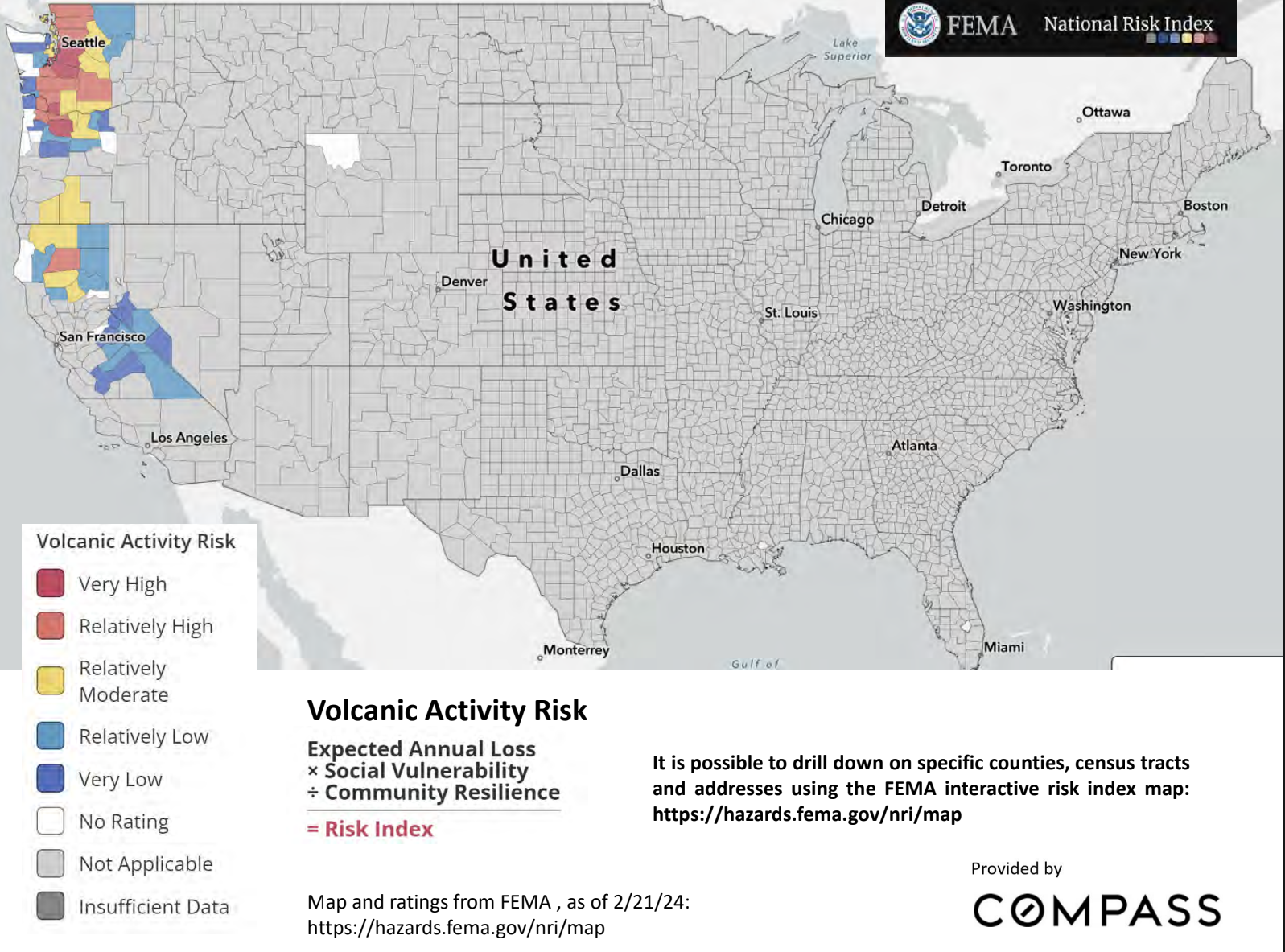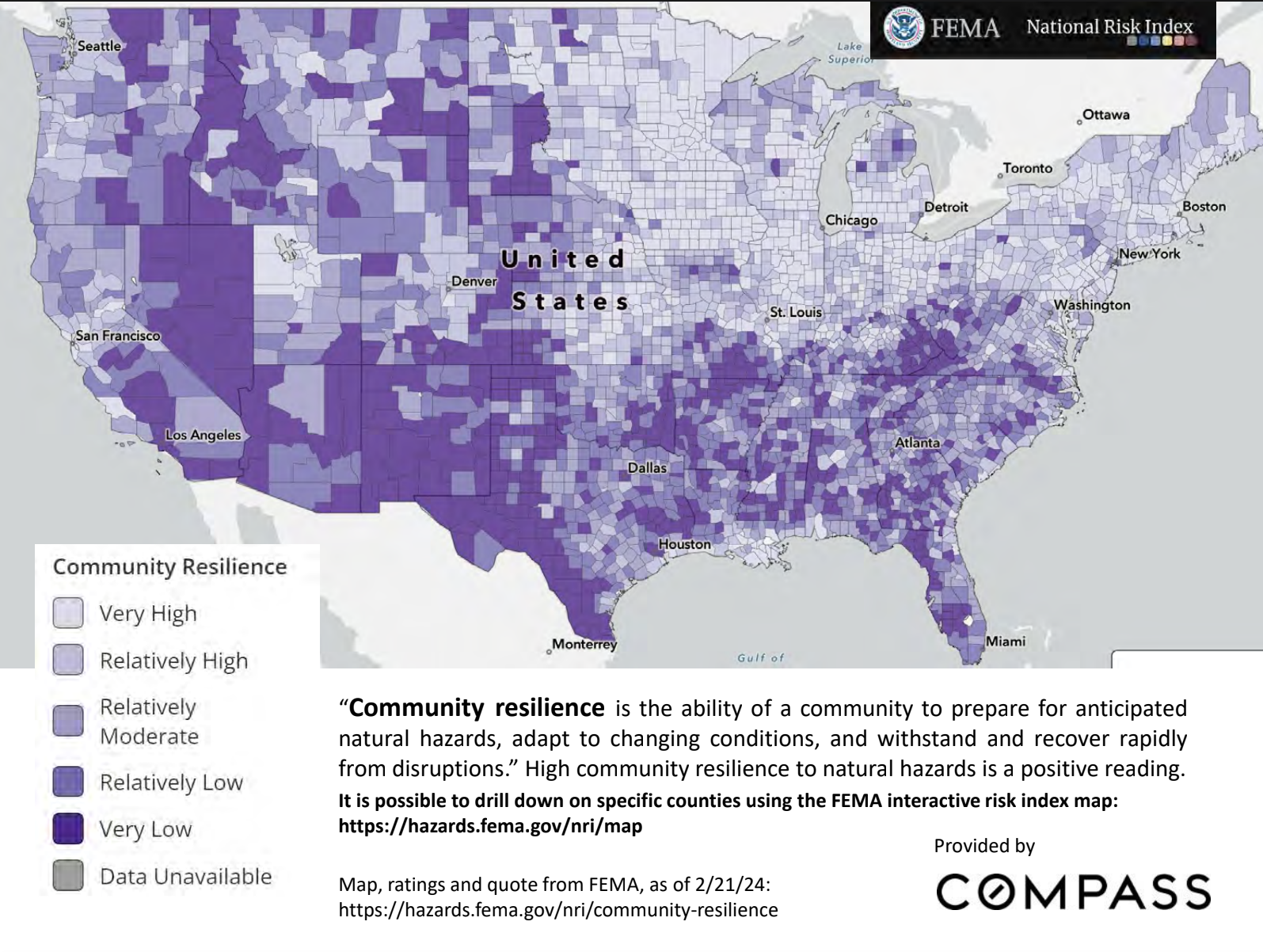How to assess Seattle’s risk in the new FEMA Map.
How risky is Seattle?
Here’s a question we don’t ask every day, but maybe should: How risky is the neighborhood I live in? FEMA’s new tool, the National Risk Index, gives us a data-driven look at how vulnerable different parts of the U.S. are to natural hazards—things like earthquakes, wildfires, floods, and more. But it also goes deeper than just weather threats. It highlights how prepared communities are to bounce back—and how social and economic factors shape that resilience.
The Three Big Factors That Define Risk
The Risk Index is built around three key components. First is Expected Annual Loss—a running estimate of the yearly financial toll from natural disasters in a given area. Second is Social Vulnerability, which looks at how hardship, inequality, and access to resources affect people’s ability to respond when disaster strikes. And third is Community Resilience—essentially, how well a place can recover. Some neighborhoods have systems and safety nets in place. Others don’t. That contrast is stark when you see it laid out across the map.
What the Risk Map Says About Seattle and the PNW
If you’re living in Seattle or anywhere in the Pacific Northwest, you probably won’t be surprised to learn that our top risks include earthquakes and volcanic activity. Got it. Not pleasant to think about. But I also want to know what I’m NOT facing as people way their risk assessment, whether there’s room for Seattle values to go up, whether to think about relocating. See the carousel below.
Scroll through this carousel to see FEMA’s national risk maps on other risk factors. No hurricanes here!
How to communities respond to disaster? This is almost as important as the disaster itself when discussing risk.
I was very happy to see how high Seattle scored on community resilience. I like this definition: the ability of a community to prepare for anticipated natural hazards, adapt to changing conditions, and withstand and recover rapidly from disruptions. No matter where you live, you’re going to have risks. Knowing what they are, and how well your community responds to them, is what will set a place apart.
Reports and studies on disaster likelihood are always going to be sobering. Given the risk factors around the US that we are NOT facing (hurricane, tornado, drought, fire), and the high scores on community resilience, I conclude this to be overall good news for Seattle and our home values.







